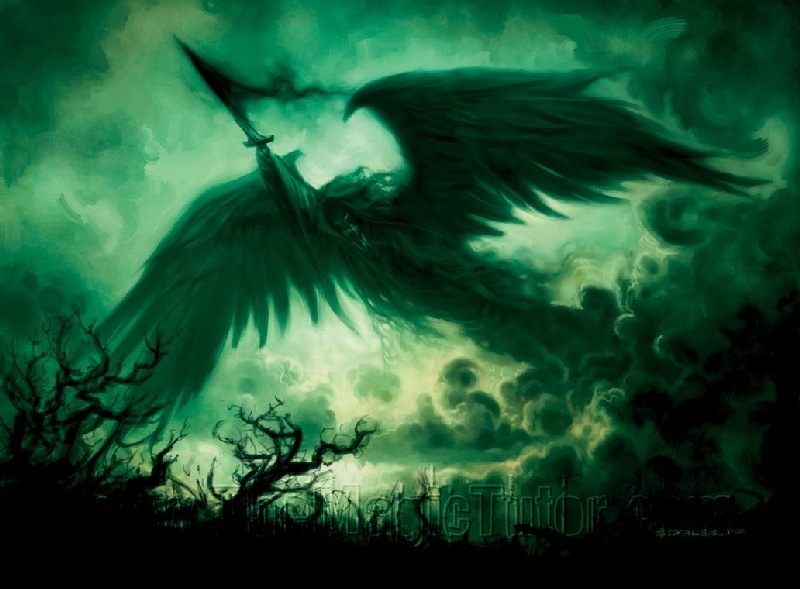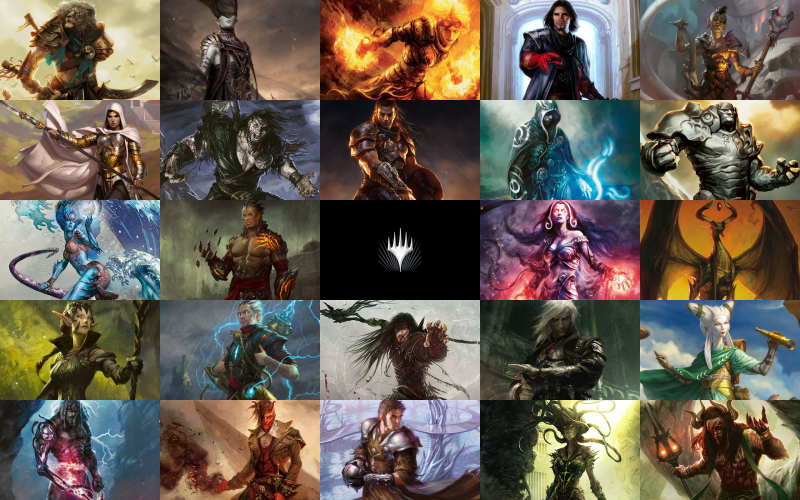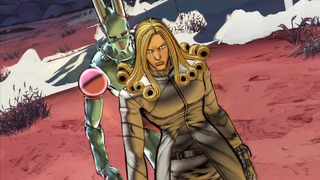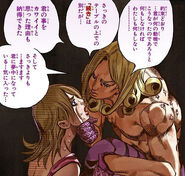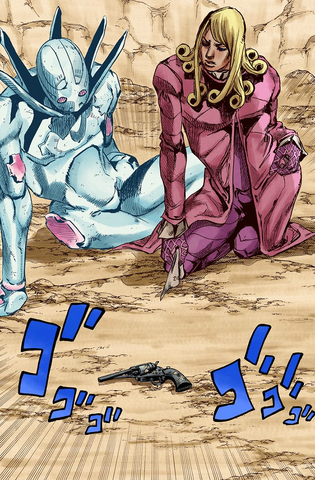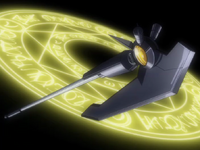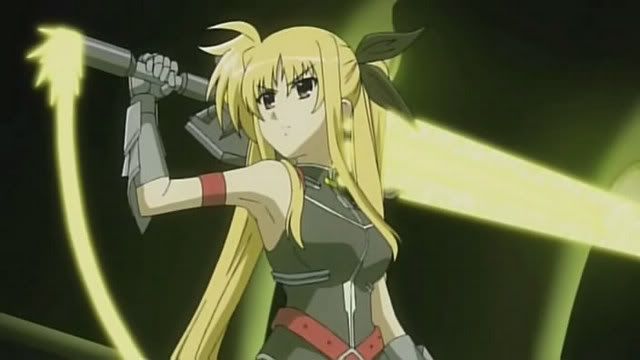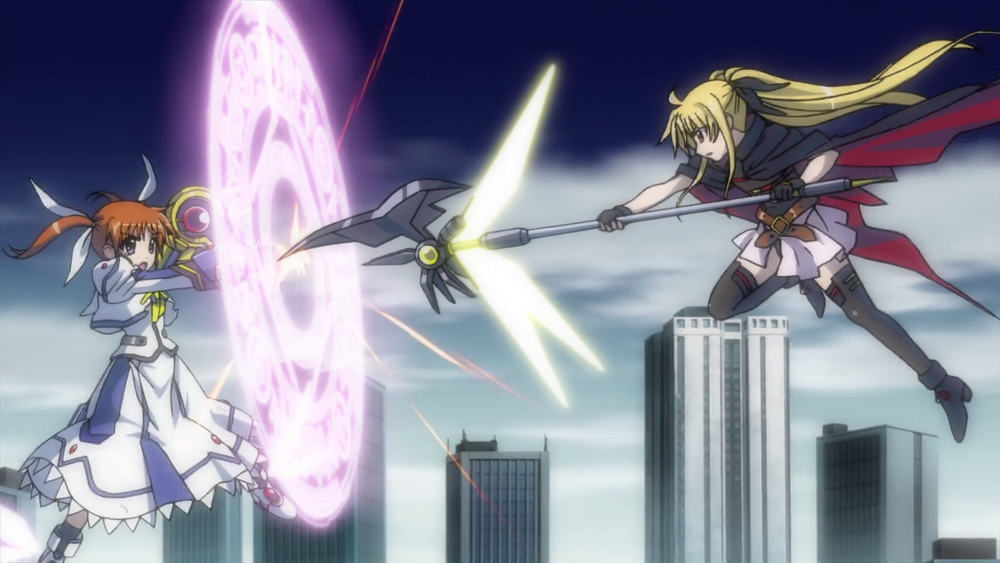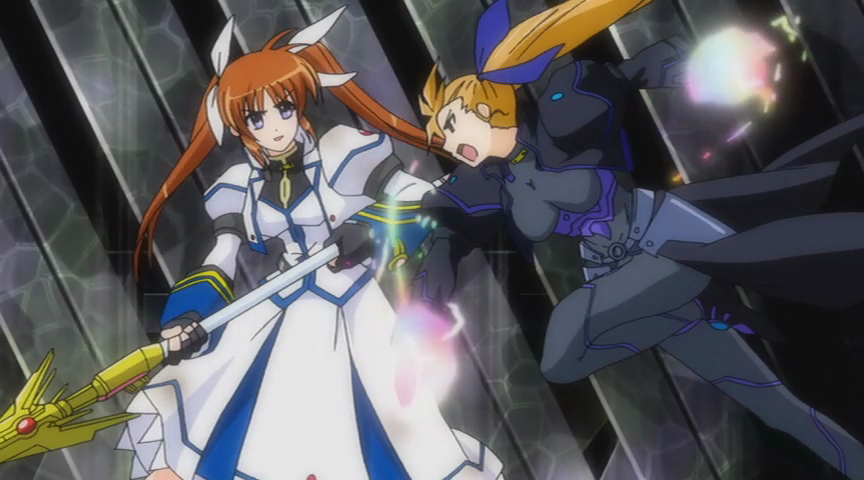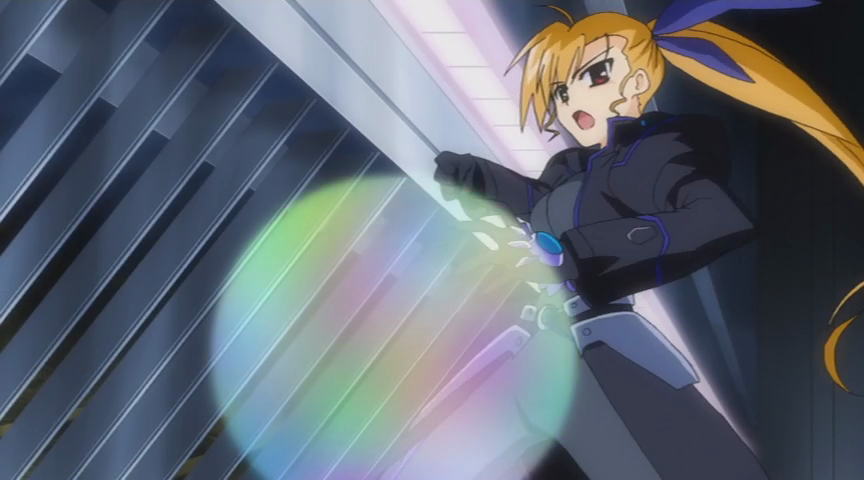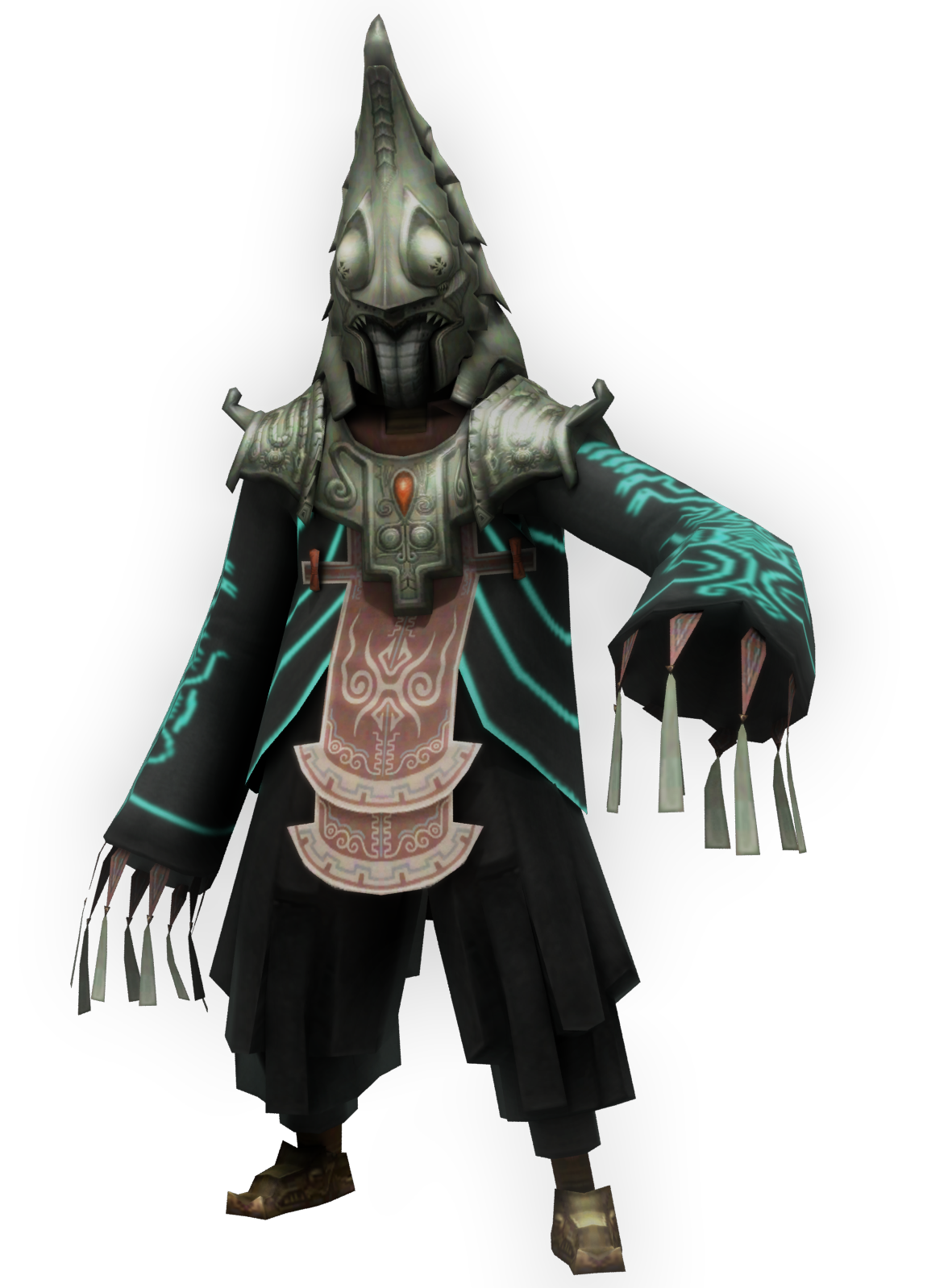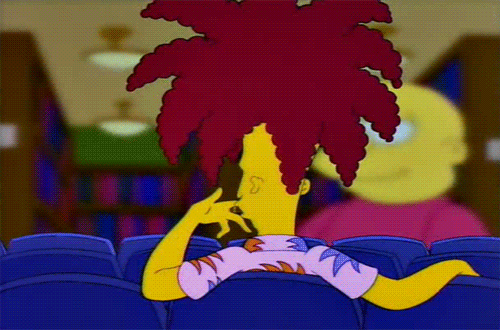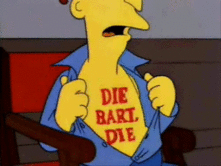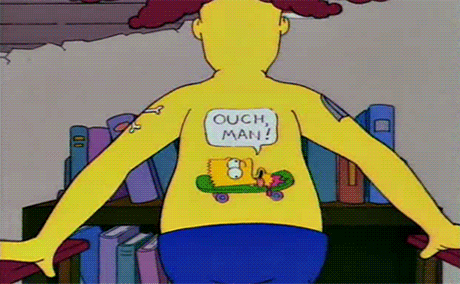CHARLOTTE EVERGREEN
Art by awesome artist and all around total bro ShogunPrinny.
"I didn't sign up for this...I didn't sign up for this, AT ALL."
Charlotte couldn't help but wonder how her life came to this. At one point she had all the makings of a normal, privileged life. Once enrolled in one of the finest private schools in town, with a promising career as a professional violinist, her enviable upbringing took a turn for the worse lighting quick. Her rich father made a few sour deals, and soon enough her family lost enough money for her to demote her from a lavish private school to a run-down public school for the unwashed masses. Rampant bullying permeated her new school life, and before she knew it she ended up violently lashing out against her oppressors. She soon fell into the -wrong crowd-, forming an unlikely bond with a violent punk rocker by the name of "Cheryl", and somehow wound up playing bass for her underground band, Prostitute Facility, hopefully with the rest of her family being none the wiser of this seedy downfall.
And yet this was just the beginning of these bizarre adventures! Later on an outbreak of an otherworldly substance granted a new breed extraordinary superpowers known as Replicants! (Who are in no way related to
Stands whatsoever, no siree.)
And as luck would have it, Charlotte herself ended up developing one of her own, a monstrous being made entirely of strings of various tension, known only by the name Aphex Twin! With this mighty power in hand, she along with the rest of her band hop further down the rabbit hole laden with brutal gangsters, conspiracies involving ancient Japanese warriors, crazy pet fish out for revenge, womanizing mad scientists, zombie jazz singer martial artists, and maybe actually getting to perform once in a while!
Charlotte comes to us from the tabletop monstrosity, Shiokaraiken no Densetsu, better known as just Fight, a very bizarre tabletop campaign that is not in any way inspired Jojos whatsoever despite what they may say.
HOW SHE (HYPOTHETICALLY) PLAYS
WEIGHT- 4
SIZE- 6 (10 WITH APHEX TWIN OUT)
JUMP- 5
GROUND SPEED- 7
AIR SPEED- 5
TRACTION- 8
Charlotte is a character that's mainly effective at a specific distance, so it's safe enough to say she's very zoning oriented. Her options are rather limited up-close, so Charlotte's game tends to focus around getting into a position where she can rack up big damage via combos and go in for the kill. This means playing a somewhat defensive game, especially against more aggressive rushdown-based characters.
Thankfully Charlotte has plenty of tools and options to deal with this, almost too many in fact. Not only can she switch between two distinct weapons, the Violin and the Bass Guitar, each with their own styles philosophies, but she can summon her Sta- Replicant to assist her as well. It's almost like fighting with 4 movesets at once!
Charlotte herself is, as her weary frame implies, a rather fragile character. Her running and jumping speed on their own aren't much to write home about, but that's somewhat relieved by Aphex Twin's antics. Speaking of...
NEUTRAL B- APHEX TWIN
"Wh-what is this...thing?"
The designated button for calling the mighty Aphex Twin on and off. She's strictly attached to Charlotte's side, so there's no desyching nonsense to be had here. She's an absolute giant, standing tall above Charlotte's frame, and thus has all the advantages and disadvantages associated with that. Any attack that hits her also deals half as much damage and knockback to Charlotte herself. And if you thought that was bad enough, if Aphex accumulates 50% damage, this'll cause Charlotte to undergo a "replicant crash." This works like a slightly shorter shield crash, and afterwards Charlotte can't take out Aphex for 10 seconds. The amount of tension damage accumulated will go down overtime as she puts her replicant away, by about 5% a second.
It's not too hard to work around these drawbacks though. Being a projection made entirely of wires, Aphex has an incredible range, and is vital for defining Charlotte's space control.
Aphex also changes up the properties of Charlotte's shield as well! While Charlotte's shield is a regular bubble normally, Aphex's take on it varies depending on what instrument you have out. (More on that later.) Having the Violin out makes Aphex shift into a veil of sharp wires that covers our schoolgirl up and makes anything that comes into contact with it take 4% damage. It's also quick enough to act as an attack at times. Main problem is that it doesn't work against projectiles, and doesn't have the -best- priority in the world, so it's not reliable against things like fully charged smash attacks. Breaking it stuns her a bit, but not nearly to the effect of an actual shield break.
When she has the bass guitar out, Aphex instead shape shifts to 2 solid walls on both sides of Charlotte. These are a -lot- sturdier than a usual shield, capable of taking twice as much punishment as an actual shield, though typical shield break rules still apply. Additionally the walls are only as tall as Charlotte herself, and leaves the space above her completely open. Try to keep this in mind!
Taking out or putting away Aphex involves a slight bit of cooldown time, easily punishable in most situations, but this can be negated by liberal use of Charlotte's down B.
SIDE B- TWO WORLDS APART
"No turning back now..."
The button for switching between her two instruments: Bass and Violin. One represents Charlotte's desperate attempt to hold onto what integrity she had in her past life, and the other represents the descent into confusion and unsettling violence that lies far beyond her control.
The main difference between her Violin and Bass stances is a matter of playstyle: Violin moves tend to be about precise timing and effectively "sniping" your opponent as a means of punishment, while Bass moves are more about less precise pressure and overwhelming your opponent head-on. Both styles are pretty generally defense-oriented, but violin is more about strict punishment while bass is about being rock solid. There's a slight punishable lag time between normally switching them, but it's relatively painless to switch between both while fine tuned, so this makes Charlotte's defensive game very strong.
DOWN B- FINE TUNING
"I just need to get into place..."
Charlotte's instruments are rarely out of tune, but to say she's an utmost perfectionist is a bit of an understatement. For this special, Charlotte will spend an indefinite amount of time tuning her instrument into place. For as long as you charge this special, Charlotte will go into a "refined" state that lasts about as long as you were tuning it, up to 10 seconds. She'll glow red, become 1/4ths faster, and have increased hitstun on all her attacks. While the speed boost is always nice, the real reason to use this is for the increased combo opportunities all around; indeed, a good amount of her combos are entirely exclusive to being in this mode. Keep in mind however that there's a small bit of cooldown lag at the end of this move, so it's very punishable up-close. Space your foes properly before throwing this out. Learning just when to fine tune is arguably one of the most vital aspects of Charlotte's game.
Charlotte cannot fine tune the Bass without Aphex Twin being out; Her brittle fingers aren't quite as efficient enough, so Aphex just alters the strings for her.
UP SPECIAL- NO ESCAPE/VIOLENT RAPPEL
One of a few moves that utilize Aphex Twin in some way even when she's not out. This means that this along with similar moves can't be used whatsoever while Replicant crashed.
Essentially, all you need to know about this move is that Aphex's stretchy wires protrude out of Charlotte's back and latch onto various objects with extreme prejudice. The length of the wires depend on if Aphex is out or not, and the exact effects of this depends on what instrument you're playing to the tune of.
In Violin Mode, this move is called
No Escape! Charlotte shouts the move name and shoots a swarm of wires that home in on the closest opponent, (The length of these wires are about 40% of battlefield without Aphex, and 60% of the stage when she is out.) and reels 'em in. The length that they're reeled in is about half the length of the wires themselves, so it'll rarely result in them being sent straight up in your face. In fact hitting with the very edge of them gets them very close to Charlotte's "sweet spot," the implications of that being more apparent later. The 2% damage on this move isn't much to write home about, but while fine tuned, this chain yanker has significantly increased hitstun, leading to all kinds of combo follow ups. Likewise for the kind of move it is, missing with it leads to nearly half a second of cooldown lag, and is still easily punishable even when fine tuned.
In the air, this attack has a slightly different effect: Instead of reeling the opponent in, it'll result in Charlotte straight on switching places with the opponent. This is the closest way it can be used as a recovery. While certainly effective, it can get predictable later on, so it's an invaluable strategy to use this in conjunction with her Fsmash and Nair.
In Bass mode, the move goes by the name
Violent Rappel! Charlotte instead shoots out a single, thick wire that can be aimed and can stick to anything. Opponent, edge, ground, you name it. Once it gets a hold of something, it instantly reels Charlotte right to it. Even better, if you stick your wire on your opponent, our girl will follow up by zipping forth and double kicking them right in the chest! Dishes out 6% damage, slight knockback as well as a knockdown state, and feels sooo good.
While this move makes for a great tether recovery and grants Charlotte a lot of movement options, the startup and cooldown lag is relatively slow, meaning it leaves her open for a brief second if she's just slinging about willy nilly. Very punishable when predicted.
The range of this move is only 75% of No Escape's, and has similar cooldown lag on miss, but thankfully this is a lot harder to miss with.
NEUTRAL A- ARPEGGIO/PULSEWIDTH
Unlike an actual neutral combo, this move comes in the form of a chargeable projectile. Charlotte plays her instrument of choice wildly as a gaggle of musical notes encircle around it. As soon as you let go, which automatically happens after a few seconds much like a smash attack, this cluster fires off as a single projectile.
The Violin variation shoots out a small, narrow, and incredibly fast bolt of sound that travels as far as half a battlefield. It dishes out 2~5% damage and puts anything it hits into a knockdown state; helpless state if they're in the air.
The Bass variation creates a very slow moving Charge Shot-sized ball of green energy about a Battlefield Platform in front of her, which chugs along for a few seconds before dissipating. It deals 3% damage each hit, and hits 2-5 times depending on how long you charge it. Knockback is only middling though.This version is excellent for building pressure at more precise ranges, even if it's not all that powerful on its own.
When Aphex Twin is out, this instead turns into another move entirely: Pulsewidth! A more traditional natural combo in every way, while in Violin mode, Aphex uses her uncoiled arms to rapidly pummel an area about a battlefield platform ahead of her. This deals 2% damage each hit, followed by a single uppercut that does 3% assuming the combo is successfully pulled off.
In Bass mode, Aphex instead pummels the area right in front of Charlotte. However, this pummel is slightly slower and is more easily escaped. Likewise it does the same amount of damage for most of the hits, but has a combo ender that deals 5% and slightly more knockback than the Violin one.
DASHING A- THUNDER DASH
While making a rather clumsy run for it, Charlotte charges forward while holding her instrument in front of her, engulfing her in a rapid yellow wind.
The Violin based dash is a very quick dart about 2 Charlottes in length and passes right through the opponent while dealing 4% damage. Comparable to a single quick attack in most ways.
While Aphex is out, she does a short delayed dash right after Charlotte does, with the same properties, potentially allowing this move to hit multiple times, in a sense.
The Bass version is a much more slow, collected charge that hits up to 3 times, dealing 4% damage each. Has an intermediate amount of knockback, meaning at lower percentages it's useful for setting up your opponent into your "sweet spot."
For added punishment, having Aphex by your side for this version will make her perform a Wario-esque shoulder charge right by Charlotte's side, completely with cartoonishly exaggerated shoulder. This'll mainly tack on 4% more damage to each hit, making this one of Charlotte's better up-close options. Just keep in mind that the end of the Bass thunder dash is slightly punishable if you're reckless.
FORWARD TILT- I JUST WANNA LIVE!
Finally we're getting to the more down-to-earth moves. As you hold the violin in your arms, this forward tilt will make Charlotte turn slightly and pull off a short but quick side kick for 7% damage. One of Charlotte's safer short-distance moves, it also does quite middling knockback.
With Aphex on the field, she assists with this move by shooting a single thin wire from her finger at the same time as her kick, aiming directly down at a space a few feet away from Charlotte. It's kind of precise, but it's quick and deals an additional 10% damage. This wire finger has a pretty healthy amount of hitstun while tuned up too, making it an excellent combo move.
If you're going bass, our troubled schoolgirl here will instead violently swing her guitar while yelling this move's name at the tippy top of her lungs. There's a bit more lag time in general for this move, but it deals 11% damage and has pretty hefty knockback, capable of actually killing at higher percentages.
But if that wasn't enough for you, the Aphex version of this is pretty scary too. Along with Charlotte's bass swing, Aphex assists by shooting out 3 thick wires at the ground from her fingers, each extending one at a time. The animation for this is suitably slow, but she has super armor all throughout it. This covers a lot more range compared to the violin flavor, and dishes out 4% damage per hit with each wire, along with decent knockback. (It's unlikely that you'll end up hitting with all 3 wires though.)
UP TILT- MUSICAL BURST
Don't go out of tune just yet. When brandishing the violin, pressing up tilt will make Charlotte play a single note, which somehow infuses one of the strings with musical energy; It immediately shoots off from the violin, travels diagonally downwards to the ground until it reaches half a battlefield platform in front of her, and then finally fire directly upwards, about the height of two Captain Falcons, and deals 15% damage with almost no knockback. Despite the elaborate description, this is actually a very quick move, and acts as an effective anti-air assuming you're at the right distance.
In Bass, aside from a slight speed decrease, this works the same except it fires a larger cluster that lingers on the ground for a while before shooting up into a thick, powerful pillar about the same size as Charlotte, and deals 3 hits of 3~4%. A great pressure tool for when you need it, but not incredibly good for anti airs.
When Aphex is out, this move turns into
WIRE BURST! Aphex instead points at a set location on the ground, same place as the musical version. For the Violin version, it creates an almost instant pillar of wires that pierce the opponent in every direction. Oh the humanity! It does less damage than the musical one at 9% damage, but it has a wider area of effect and Charlotte can get a move on shortly after it occurs.
The Bass version has the same delay as before, but it instead spawns a series of 3 thick stalks composed of wires wrapping around eachother that shoot a good deal upwards. Has much more range than the musical version at about 2 Ganondorfs high, but is even slower to start and does ever so slightly less damage at 7% (great for following up on though due to minimal knockback and somewhat formidable hitstun when fine tuned.)
DOWN TILT- LOGAN ROCK WITCH
The Aphexless versions of this move aren't anything special, which may be a good thing.
When holding the violin, Charlotte gets down and performs a quick sweeping kick for 6% damage for some much needed close range pressure. Has the potential to trip at the very tip of this attack.
On bass, our girl instead pulls off a violent lower sweep with her bass guitar. The bass sweep dishes 7% damage worth of pain in exchange for a slightly slower and more punishable startup, and knocks the opponent upwards a bit. At lower percentages while tuned up, this can act as a pseudo launcher, leading to some great combo opportunities so long as you can pull this move off at the right time thanks to the bass's great pressure tools.
Aphex's take on this input is entirely different. Instead of all that nonsense, the sta- REPLICANT digs into the ground with her hand and immediately pulls up a lining of sharp wires from the surface, creating an acute angle of damaging threads that extend from Aphex herself to 1 1/3 battlefield platforms. This is a bit difficult for me to explain in words
so here's a tiny diagram made in roughy 1000 hours in Mario paint.
These wires damage foes on their way up, but their exact properties depend on your instrument choice:
The Bass version gets pulled up at a higher angle, meaning it's better for all around defense, and does 7% damage for this moves entire duration
The Violin version on the other hand has a slightly lower angle to take up, but it possesses a special timing based sweetspot of sorts at the very end of this move, right when the wires are at their tensest. You can tell because they flash for this split second moment. Hitting with this deals 16% damage and great upwards knockback. If you're not as careful, the attack simply deals 4% damage and nearly no knockback. It's almost impossible to hit with the sweet spot while tuned up.
Both versions of this move have somewhat unsafe startup times, but very safe cooldown ones, even on block. Definitely one of Charlotte's go-to combo moves.
FORWARD SMASH- TRIPLE CONCERTO KICK
With a brisk shorthop into the air, Charlotte defies all laws of gravity and does a triple spinning kick in the air! While of course yelling this move name as hard as she can. She has a bit of help though; While she's kicking, Aphex's wires spurt from the soles of her foot! This extends the range of this move to a whopping 1 battlefield platform. When on violin, this move actually has a sweetspot on the very tip of the wires that deal the most damage here: 10~15% damage each hit with decent knockback on the final hit. Of course it's quite the feat to hit with all of them, but it goes to show just how valuable keeping the opponent in Charlotte's "zone" can be. When not sweetspotted though, it only deals 3~6% per hit
The Bass version of this move has only a 6~10% damage ratio, but this is universal no matter what length of the wire you're hitting.
FORWARD SMASH (APHEX)- HOLD ON
Yes, this move is different and vital enough for it to have its own header. Honestly it would have been a prime contender for the Neutral B if that wasn't currently being eaten up by the whole Replicant switching thing. Smash needs more inputs. ;A;
For the startup animation, Aphex Twin shoots a long, thick wire off-screen and pulls back either a wrecked car about 50% bigger than Bowser (when on bass) or a street sign (on violin.) Yes, this move does have some mean startup at 2 seconds, but it shouldn't be too hard to keep your opponent away during it. She holds the piece of junk about a battlefield platform ahead of Charlotte, and this is where the actual charging animation starts. You can move at walking speed while charging this.
Depending on how long you charge the rest of the move, you can yield some entirely different effects of greatly varying practicality.
For the wrecked car variation, if you let go immediately, Aphex'll simply drop it down from about a Ganondorf's height. Getting hit by it results it 36% damage as well as huge knockback, but this is incredibly rare. Great edgeguard tool though if you can get the incredibly precise timing right. But the main reason to use this variation is because the dropped car remains on the stage for either 15 seconds or until it takes 50% damage, by then it'll just break down and disappear. This car is a nifty bit of stage hazardtry, as not only does it provide good cover and space control if you're playing a super defensive game, but it can be used in conjunction with the neutral aerial as well, which is always nice.
If you hold the charge for an intermediate amount of time, and let go, Aphex will constrict the car with its thick coiling wires, squeezing all the oil from it like a fresh fruit, and then throws the vehicle off to the side. This creates a BFP-sized oil slick on the ground, causing anyone besides normally Charlotte herself to slip while walking over it. (How does this work? If you zoom in, you can see that Aphex is creating a tiny wire surface over the slick whenever Charles walks over it. So likewise, she slips as usual when replicant crashed.) This slick lasts for 15 seconds as well. Another form of space control, it's more subtle than the car wreckage, but has the added benefit of not effecting Charlotte under most conditions while doing so. Is it really worth the charge up time though? This is entirely situational.
Finally, getting it to MAX CHARGE results in Aphex squeezing the car so hard, it straight up
explodes! The exploding car isn't quite as powerful as just dropping it, being about worth 18% and some good knockback, but it has a far greater area of effect, being x3 as big as the car itself.
For the street sign, it takes slightly less time to pull this one out from offscreen, and letting go immediately makes Aphex brutally swing the sign down! As powerful as it may seem, it only sweetspots with the actual sign portion. It dishes 25% damage and great knockback while sweetspotted, but only 9% damage and piddling knockback when it isn't.
Somewhere in the middle, she simply sticks the sign into the ground, in a slightly crooked fashion. This lasts on screen for about 20 seconds or so, and can't really be damaged or get in the way of anyone at all. No, the main reason for this move is to act as a dongle for both Charlotte's Up B and Neutral Air. With No Escape, she can draw the sign towards her, resulting in a super quick attack that deals 11% damage and decent knockback to anyone in the way (Sadly once she does this the sign tumbles on the ground and disappears, meaning you can't use it as an item or anything) OR use Violent Rappel to have another handy substance to stick onto. Incredibly handy to have around for these reasons.
Finally for those that are far too patient, going to max charge results in Aphex crushing that poor sign with no remorse, crumbling it into 3 pieces on the ground. These act similarly to ZSS's suit pieces, although most of them do absolutely terrible damage at 3% with little knockback. The main portion you want is the actual sign portion, which does 25% damage and intermediate knockback. Of course, keep in mind anyone can pick it up...
All around an incredibly versatile move to have on hand, any Charlotte player worth their salt will be mainly using the sign or car placement to give her some much needed spacing-related options. You can only have one piece of junk on the stage at one time, and can't use it again until 10 seconds pass. If you do use it exactly then, the junk you placed previously will promptly crumble and disappear.
DOWN SMASH- STROTHA SHOCKWAVE
Get your violin ready; in this mode, pressing down smash will make Charlotte play a note that produces a Reppuken-style projectile that travels along the ground for about 1.5 battlefield platforms. This may seem nice, but this move has a special timing based "sweetspot" that activates once it travels 1 platform. This deals 19~26% damage when sweetspotted, with good upwards knockback, but only 11~13% with mediocre side knockback otherwise.
Going on bass, Charlotte clumsily swings her guitar over her shoulder and SLAM! Drops the bass hard, creating a series of 3 erupting shockwaves that slowly burst along the ground, eventually covering about 1.2 BFPs in space. The guitar portion of this move is kinda weak, only worth 5~9% damage. It's the shockwaves that really matter, doing 13~16% on each hit, which is pretty significant for a multi-hitting move, but given the decent knockback on each, it's highly unlikely you'll hit with all 3 of them, or even 2. (There is one way to hit with all 3, by getting the timing on getting hit with the first shockwave exactly right combined with tuning up.) This move therefore is meant moreso for pressure than anything else.
Aphex's take on this move doesn't play around, and is probably one of the most common uses for Aphex Twin as far as offense go; The replicant will whip a strain of her wires forward, about 1.5 battlefield platforms ahead. This whip leans downwards to a certain extent, so it's only particularly useful against grounded opponents.
In Violin mode, the inner wires do a minimal damage amount of 6~11%, but pushes the opponent back a touch to get them into a more desirable position. The very edge of the wires are a sweetspot that deals 15~20% damage and great knockback. The sweetspot is actually less safe on block though, so be careful around foes with similar long reach.
The Bass version of this move hits 3 times, starting at the edge of the wires, and pulls the opponent in on each of the 9% damage hits. Actually more damaging on tip than the Violin version, and safer on block to boot, but uh...you're pulling the opponent in your face. Why are you doing that exactly?
UP SMASH- WING BURST
"Soar!"
The violin version is a simple, but effective anti-air/literally anyone who dares lie above you attack. Charlotte leaps directly upwards, about 1.5 vertical BFPs in height,(try wrapping your head around that one) and shoots wires from her body in all directions, looking a bit like a screeching hawk while doing so. This is straight up incapable of hitting most grounded opponents (as only the actual wire burst does anything), but a successful hit results in 22~28% damage and good knockback.
Bass mode is kind of different: She instead soars like a hawk diagonally, 1 diagonal BFP of course, as Aphex's wires form an aerodynamic shell around her. This hits 3 times, 7% each, and some degree of knockback. Not as good overall as the violin version, but easier to hit lower elevated opponents with.
These moves do only 1% damage each while replicant crashed.
The Aphex mix of this move is called
Top Speed, a far more wilder take on the violin Wing Burst: Aphex wraps Charlotte around in a thick wire, from head to toe, and then lets it rip! Poor Charlotte goes spinning like a top, her eyes looking visibly dizzied, and screaming like a schoolgirl as she quickly rises 3 stage builder blocks in the air! The startup time isn't too bad for what it is, but obviously you shouldn't go throwing it out with someone close by.
The violin version of this move is notoriously tricky to hit with: At the peak of this top spinning journey, Charlotte aggressively fires the wires from her body in every direction as usual, dealing 27~36% damage, great knockback, and has a slightly wider EoA compared to the Wing Burst. Only problem is that it requires travelling a longer distance, meaning your opponent has more time to react. Also it's not incredibly common for your opponent to be at such a specific distance, but the option is there if you want it.
The bass version is safer overall, as it universally deals 14~19% damage as Charlotte spins upward, with decent side knockback. The bass Charlotte tornado also possesses some of the highest priority out of all of her moves, being worth at least as much as a 36% move.
NEUTRAL AERIAL- TENSION PAGE
"There's still more to this mystery!"
One of Charlotte's primary moves, this is one of the main reasons why the forward smash is worth writing home about. Charlotte grabs a book from hammerspace and rips a page right off it, and uses Aphex's wires to stick it onto a nearby surface where applicable. This page can stick to opponents as well as stage obstacles and hazards. When attached to an opponent, it only dishes 3% damage and slight stun, but it's really the side effects of this move that you want.
When the page is stuck on the foe, the range and homing properties on Charlotte's up B maneuvers increase by 40% for 15 seconds, which is neat in of itself.
For obstacles, this is where Hold On comes in!
Once placed on a piece of junk or similar stage hazard, you can press nair again, causing the page to transform into a wire that latches onto the opponent if they're close by enough. This automatically drags them to the page's position. A very situational move, this can still lead into shenanigans like forcing the foe to get into the place you want them, and having a wider area to do just that. Additionally, you can place a sign or car by the ledge, emblem it, and get the foe into position for you to switch places with them while off the stage. The possibilities are truly endless...
FORWARD AERIAL- THUNDER DIVE
"Thunder Dive!"
Engulfed in a sharp wind current, Charlotte air dashes! Yes, this acts much like a weaker, aerial version of the Thunder Dash, but you can control its direction during its 1 second duration slightly.
In violin mode, it passes through the opponent for 6% damage, while the bass version just knocks them back on hit with 9% damage to be had.
Aphex's forward aerial however is a single whip of her wires. This is highly comparable to a single dosage of Charlotte's Triple Concerto Kick, having the same exact range and dealing 15% damage and great knockback when sweetspotted on the edge for the violin version (4% damage otherwise) and 9% overall damage with mediocre knockback on the bass one.
A very fast move, it's a great zoning normal to throw out while keeping your foes stuck in your sweet little area. It doesn't hit crouching opponents however...
DOWN AERIAL- FENDER SWING
"I'm too reckless!"
Charlotte swings her instrument down using Aphex's wires by the tips of her fingers.
The Violin swing has a longer range, as long as the space between the middle battlefield platform and the ground, but of course it only sweetspots with the violin portion, at 17% damage and good side knockback. Otherwise it's a weak 5% everywhere else.
The Bass swing is only half as long as the Violin one, but it delivers 13% damage with okay knockback everywhere it hits. It possesses a slight moment of cooldown lag afterwards as Charlotte struggles to hold onto her guitar.
When Replicant crashed, there's no range extension to this swing whatsoever. Funnily enough, this actually makes the Violin version easier to hit with. Keep that in mind.
The Aphex dair is completely different; She wraps around Charlotte's body and shoots directly down as a formless blob, finally dissipating as she hits the ground. There's actually no damage difference between the Bass and Violin versions: instead they affect fall speed, violin being faster and bass being floatier.
UP AERIAL- WIRE FU
This is in every way a slightly shorter ranged upwards version of Aphex's forward aerial: Charlotte pulls of a wicked flip kick, but with one of Aphex's wires trailing on the sole of her foot. But still, it's a fine delivery of 15% damage and great knockback when sweetspotted on the edge for the violin type (4% damage otherwise) and 9% overall damage with mediocre knockback on bass. Does only 3% damage and no range increase while Replicant crashed.
The Aphex edition is more horizontally minded; Aphex whips her spaghettified arms 3 times, rotating her torso like a blender. This creates a hitbox about .8 Battlefield platforms around her. Likewise the violin and bass damage split still applies here. A sweetspotted hit on the edges of her wires do 9% damage each, 2% otherwise, with decent knockback, and 5% damage overall on bass.
BACK AERIAL- CARE BECAUSE I DO!
As Charlotte definitely isn't one to get into the heat of things, her back aerial has her performing a backwards rolling dodge, going as far as half a stage builder block and kicking anyone in her way for 7% damage and a tiny dose of side knockback. Simple, but a fine method of getting out of trouble when you need to. Because of course, what else could embody Charlotte better? (There is no violin/bass split on this move of all things.)
But of course Aphex says otherwise, as her take on this is primarily offensive: Her back aerial is a wirey kick backwards, with it's main distinction being that it has the same properties as a sex kick! This makes things even harder to approach you, even from behind!
When sweetspotted in violin terms, this deals 14~8% damage, and 5~2% otherwise. 9~5% overall damage while on bass.
GRAB/THROW- Ally Oop!
"Aiya..."
Charlotte's grab game is...weird to say the least. Closing her eyes, she yells and charges forward, shoulder-first. If she somehow makes contact with a foe, she takes ahold of the and can either throw them forward or backward depending on what you input while grabbed. Otherwise, it'll just choose at random.
When she throws, she clumsily topples the opponent along with herself, putting the foe into a knockdown state while she immediately roll dodges back up. This deals 11% damage, and can potentially lead to whatever setups you need that relies on taking advantage of your opponent being in a lying position. But otherwise, it's kinda unremarkable. I wonder why it's even here...
GRAB (APHEX)- SO PREDICTABLE
"I can't believe I saw that coming!"
Aphex's grab is what you really want here. She points forwards and makes a pair of kirby-sized wires sprout up from the ground. This grab is actually chargable! She can charge it for about 1 second, resulting in the wires sprouting about 1-2 battlefield platforms ahead of her. This is quite tricky to get the timing down, but when mastered, the potential for mindgames are an incredible tool for getting an unexpected kill in.
This grab can even work while in the air, though obviously the wires can only manifest on the ground. This whole setup gives Charlotte a unique sort of control for her enemies' ground game, but it may not be so effective against air-happy foes.
Once it hits, the wires wraps and binds the opponent into place. The pummel is, as you'd expect, Charlotte playing her instrument while blasting rhythmical energy through the wires for 1% damage each. Wait, what do you mean you didn't expect that?
Your instrument of choice doesn't come into play during the throws at all.
FORWARD THROW- DOUBLE CLOTHESLINE
Two drawn-back wires appear at the opponent's neckline and ankle, snapping from behind on the lower and from in front up above, flipping them around! This does minimal damage, only 5%, but has a very hefty amount of hitstun on its own; When tuned up, this puts the opponent into a straight up "dizzy" state, similar to Jiggly's sleep...but with dizzy.
DOWN THROW- DODGBAW
"How deep can I go?"
A more unusual throw, a few of Aphex's wires hold the opponent's appendages in place, and the rest split off and coil themselves into the shape of...balls?
The camera closes in on Charlotte adjusting her gleaming glasses, frowning while holding the Aphex balls in her hand, takes a deep breath, and yells a mighty battle cry as she tosses as many balls as she can at the poor defenseless opponent.
This is essentially an intensified pummel; mashing A as many times as you can will result in Charlotte rapid firing balls, each doing around 2% each. She -really- brings on the hurt here, so the average mashing session will usually yield 18-20% damage, though the max you can get in 36%, with a final dodgeball hitting the opponent visibly in the jaw, breaking them out of the web with decent knockback.
"Balls deep!"
UP THROW- WIRE VOLLEY
Of course, it just wouldn't be not-Jojos if it didn't have a liberal amount of rapid fire fisticuffs flying around here and there.
On a whim, the opponent becomes completely wrapped up from head to toe in wires, and are sent hurling up into the air. A *shing* goes off in Aphex's eye, and she engulfs the poor foe in a tropical storm of rapid fire fisticuffs, capped off with a final sock to the stomach that dissolves the wire wrapping restraining your victim, and lets that bad boy fly into the air. Does only 17% damage in total, but has amazing upwards knockback, easily one of the best in Charlotte's arsenal. It may seem simple, but this move definitely puts her grab on the map, and forces any grounded adversary to respect it at all times.
BACK THROW- CRAWLING IN MY SKIN
In a rather cruel maneuver that makes even Charlotte squirm, Aphex burrows a few of her wires into the opponent's skin and throws them a short distance forward in a knockdown state. For the next 5 seconds, the wires whip around and gradually damage your victim every second or so.
The actual damage may as well not exist, only 1 percent per hit, but unlike the lip stick effect, every time they take damage, they take a small degree of hitstun. These occasional moments of vulnerability are the real valuable aspect of this move, especially when combined with a tuned up assault. Of course, only really advanced players will be able to fully take advantage of this, and in most cases it might not be worth wasting your grab on it unless you're truly confident.
FINAL SMASH- CHARLOTTE'S WEB
Against all odds, Charlotte managed to grab ahold of the smash ball! No idea why you're playing with FSes on, but hey, I won't judge!
Keeping with tradition, the exact specifics of this move will depend on what weapon you're running with at the time.
When on violin, the camera will close up on Charlotte's more confident outlook, punctuated by scary shining glasses, as she rushes a slight distance and fires a single wire from her arm! This wire goes about half the length of battlefield, and has slightly better homing properties than her vanilla No Escape! This will mainly just hit one opponent, though you can catch 2 or 3 in there if your foes are really that bunched up together.
If she gets the hit in, the scene will transition to a dark concert hall with the victims being bound in place. A curtain opens, shining a spotlight on Charlotte holding a violin with a somber expression on her face. With the cue of an unseen orchestrator, she puts her heart and soul playing the chorus of a heavy string piece, all the while saying to herself, "Yes, this is who I am! Never let hope go!"
After a hefty few seconds of mean violin noodling, the entire concert hall dissolves into wire, and the glowing eyes of Aphex Twin glare overhead as the millions of wires of death shoot directly at the the foes.
"I will...figure this out...and end this madness!" Charlotte triumphantly declares as she finishes her piece, just in time for the millions of coils to form into hard-hitting fists, beating the ever living tar out of everyone until the entire hall collapses onto itself.
The scene transitions back to the stage, as the poor victims are instantly KOed.
On bass, Charlotte will look more somber and unsure, but she rushes forward for the kill anyway! She fires a grouping of wires from her arm, which forms into a giant web, the size of the quarter of the screen on battlefield!
If you get your gaggle of losers trapped in this mess, the scene will transition as usual, but this time into a dark, seedy punk rock club, with the victims bound into greasy chairs. The spotlight shines on a dreary looking Charlotte, who without hesitation busts out a facemelting bass number that blasts over the speakers.
"I guess...this is the world I've been sucked into now..." she flatly expresses as the faces of your victims begin flopping around like jelly. "...but as long as the future remains...I will fight my hardest!"
The booming speaker system behind her then beings to deform into a writhing mass of wires, who then reform into the menacing body of Aphex Twin, winding up her mighty fist.
"Tiffany, Charlotte, none of that matters as long as I can make right again!" the newly confident Charlotte finishes her bass solo with a final note, leading Aphex to punch the ever loving goodness out of the opponents, causing the entire building to collapse.
This version only deals 33% damage in total and doesn't really KO until higher percentages.
ANIMATIONS
*Idle- With the violin in hand, she holds it between her arms meekly while fidgeting around, occasionally tugging at the bass guitar strapped to her back. She doesn't hold the violin up to her neck until she attacks.
With the bass guitar she clumsily holds it in position while occasionally fiddling with the strings to make sure she has everything correct.
Aphex herself simply stands proud along her side, crossing her arms as the winding wires that comprise her body whip out and about.
*Walking- Charlotte turns straight again and walks forward with her instrument in hand, Aphex leaning forward as her wires sway in the wind.
*Running- Charlotte dashes with the sort of clumsiness and compsure you'd expect from a panicked schoolgirl, struggling to hold onto her instrument.
*Jumping- Charlotte hops with a surprising amount of retained daintiness from a young refined lady.
*Falling- She holds her skirt down while struggling to keep ahold of her instrument.
*Fallen- Charlotte lies on her side with her glasses off center and her eyes doing that continuous swirly thing.
*Taunt 1- Our schoolgirl plucks her instrument's string out of sheer boredom, sometimes plucking out a coherent song such as a segment from Canon part 4 or that one Mario Party 2 song.
*Taunt 2- Charlotte answers her 1999 era cell phone and angrily shouts into it, "I REALLY don't have the time now!"
*Taunt 3- Charlotte takes out a nondescript book from her pocket and fingers through it, and finally exclaiming "I think I got it...!"
*Win Pose 1- Charlotte plays a somber melody on her violin, both her and Aphex's giant cross-armed body looking into space.
*Win Pose 2- Charlotte angrily fingers a number on her bass guitar, so hard in fact that she ends up breaking 2 strings. After a prompt moment of shock, Aphex places her fingers on it and replaces the broken strings, leading Charlotte to bashfully scratch her head.
*Win Pose 3- A giant yellow hawk flies onto the screen, and lands on Charlotte's arm. "H-hey! You finally came back!" She excitedly cheers as the hawk cleans out its feathers.
COMBOS
To be added in the full version of the game we'll patch it in later I swear
OTHER NOTES
Nothing here yet









 CHILL MAN
CHILL MAN


